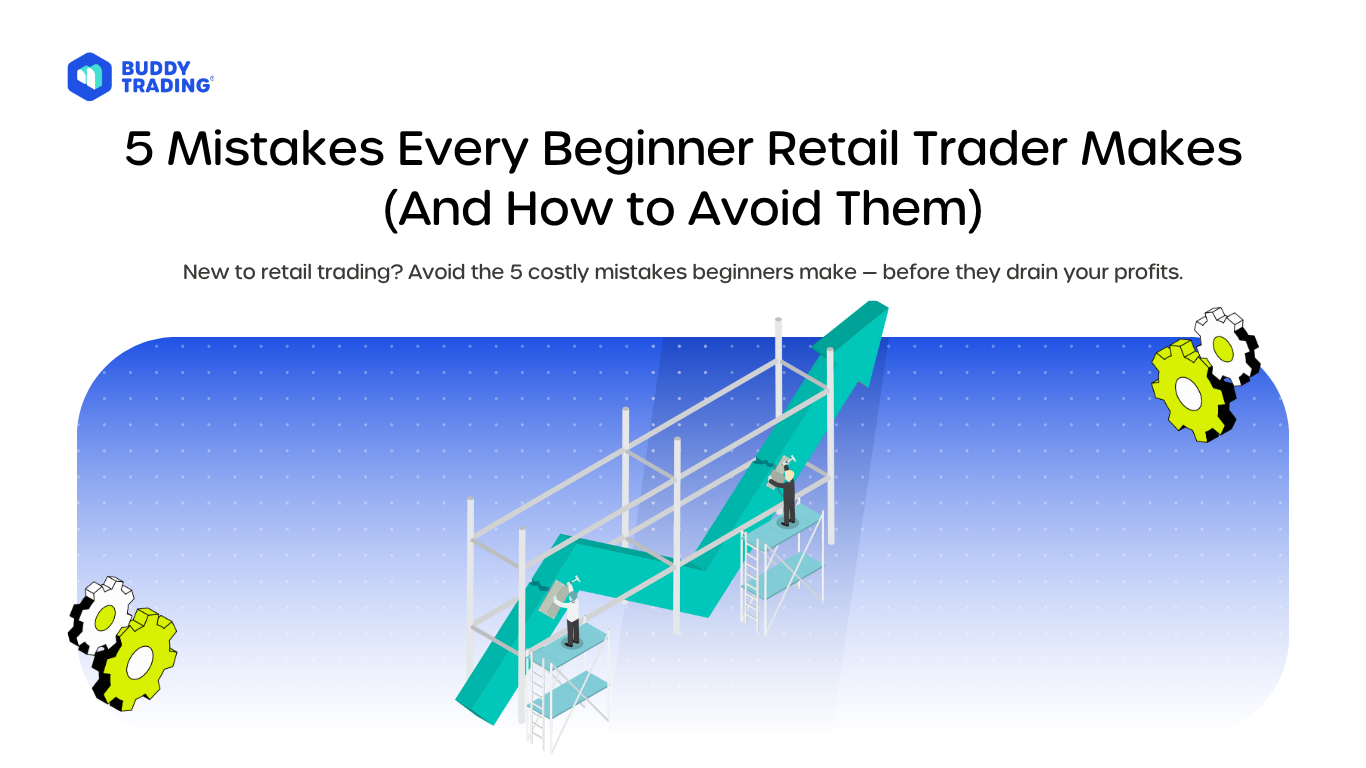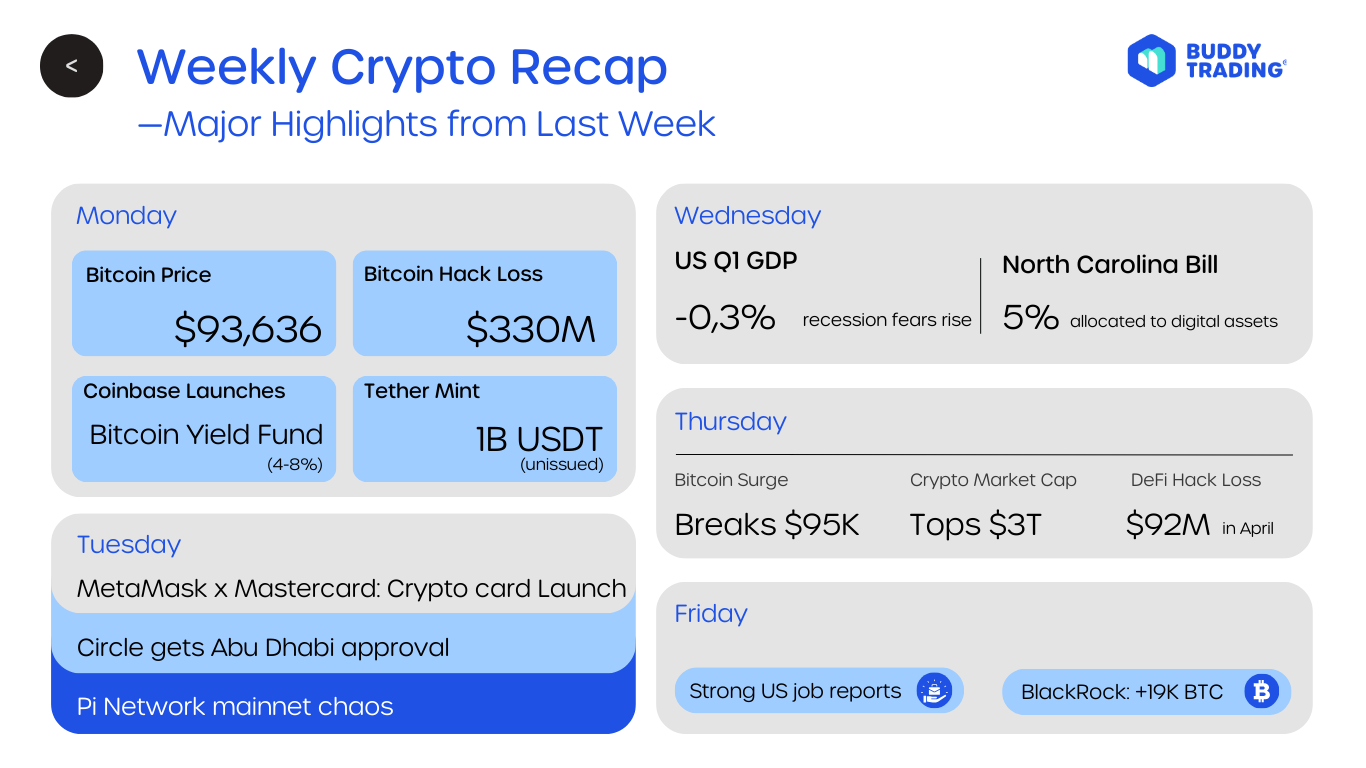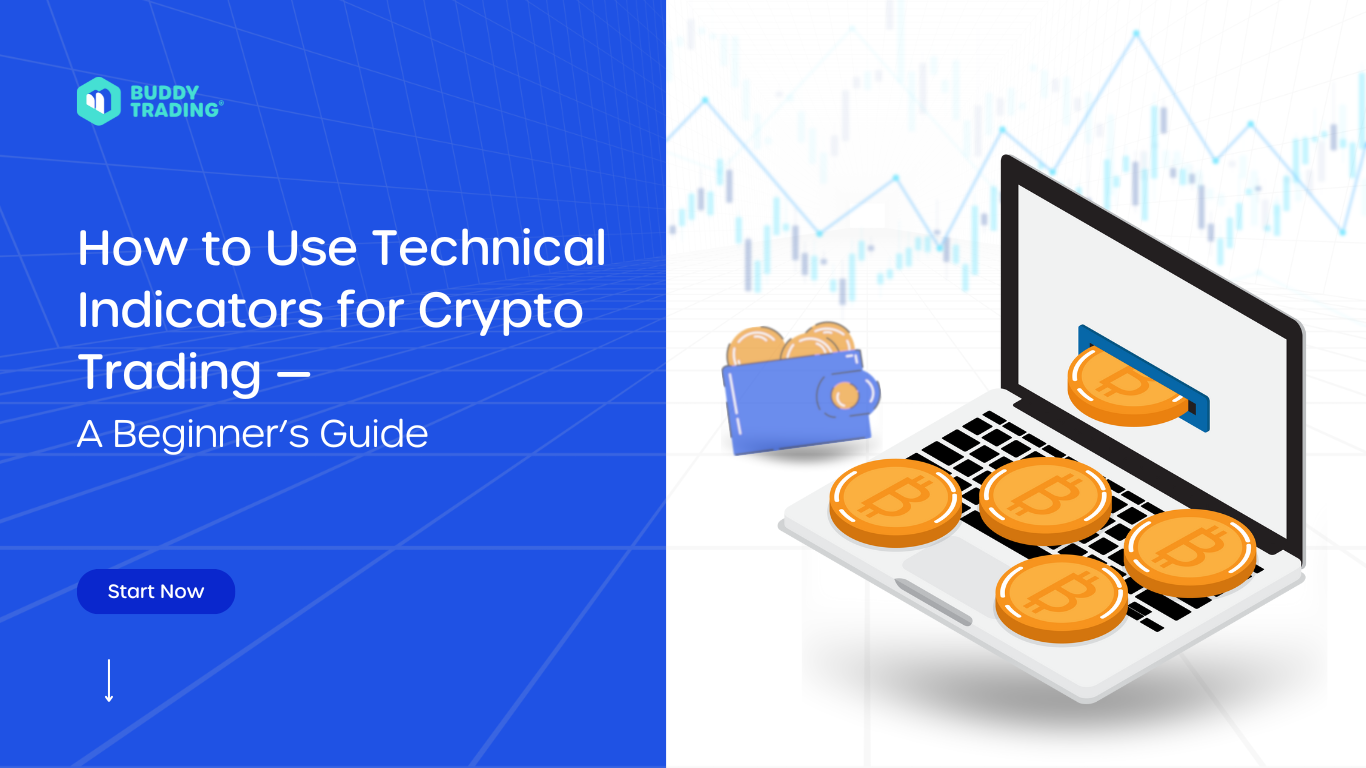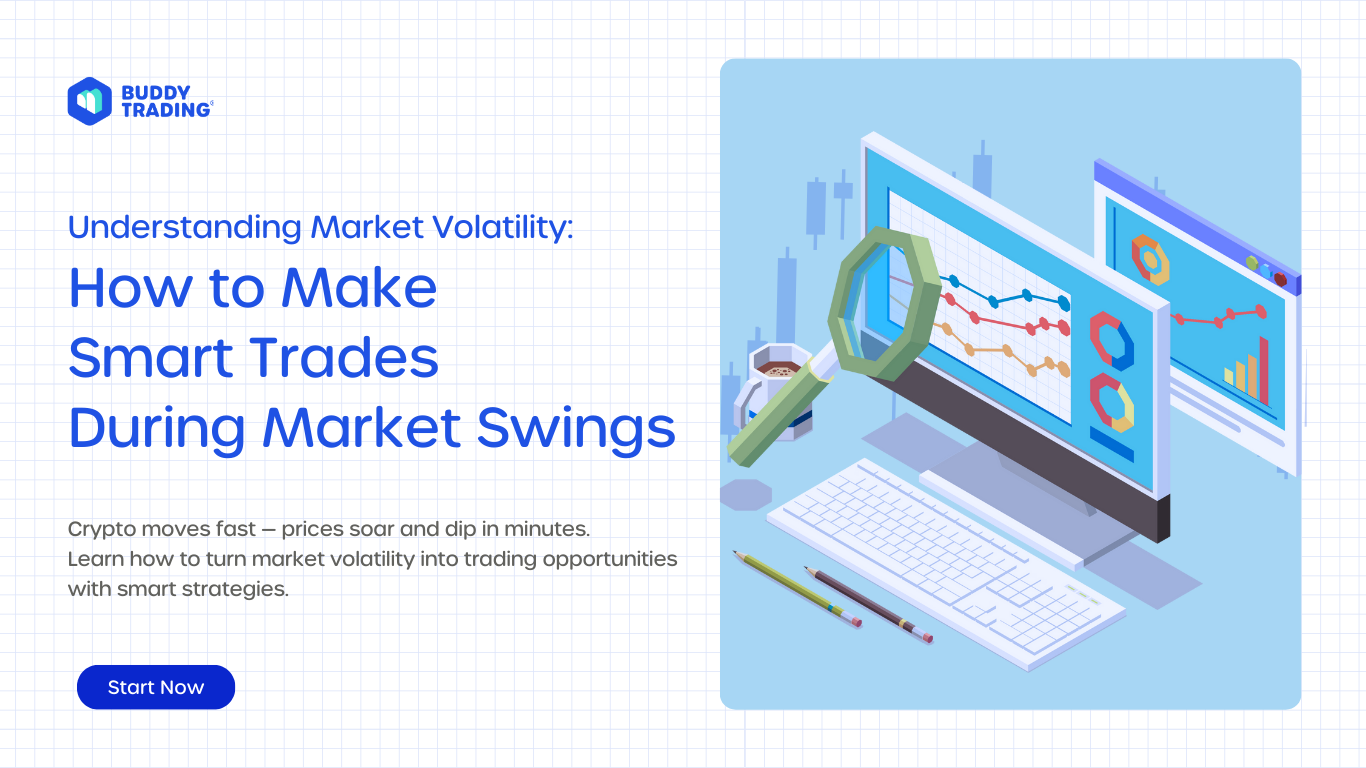The first week of May delivered another rollercoaster for crypto investors. Bitcoin extended its rally, crossing impressive price milestones, while the overall crypto market surged past the $3 trillion mark for the first time since February, signaling renewed bullish sentiment.
 Our Blog
Our Blog
5 Mistakes Every Beginner Retail Trader Makes (And How to Avoid Them)

Retail trading has opened the door for everyday investors to access the strategies of top-performing traders. On platforms like BuddyTrading, it’s easier than ever to connect your capital to experienced lead traders and let their decisions guide your trades. Sounds simple, right?
But for many beginners, retail trading can become an expensive lesson if approached carelessly. While the concept is straightforward, the execution is where most newbies stumble. After working with thousands of traders and analyzing behavior on our own platform, we’ve identified the five most common — and costly — mistakes new copy traders make.
If you’re just getting started or thinking about dipping your toes into retail trading, read this first. Avoiding these mistakes could save you time, money, and frustration.
1. Chasing Hype Instead of Proven Performance
It’s easy to get swept up in the excitement of social media. A trader posts flashy gains, followers pour in, and everyone rushes to follow. But hype doesn’t equal skill.
One common beginner mistake is selecting a lead trader based on popularity rather than a consistent track record. Just because someone went viral with a lucky 10x trade doesn’t mean they can sustain those results.
What to do instead: Look at long-term performance. Check the trader’s historical returns, risk profile, and how they handle drawdowns. The best lead traders are consistent, not flashy.
2. Following Without Understanding the Strategy
Retail trading doesn’t mean blindly following without doing your homework. Too many beginners fail to understand the strategy they’re following — is it high-risk scalping? Long-term swing trades? Airdrop farming?
If you don’t know how your lead trader operates, you won’t know what to expect during volatility. That lack of understanding often leads to panic selling or pulling out at the worst possible time.
What to do instead: Take time to study the trader’s approach. Read their strategy description, observe their trade history, and don’t be afraid to ask questions if the platform allows interaction.
3. Ignoring Risk Management Setting

One of the most powerful features of AI-powered trading platforms is the ability to control your risk exposure. Yet beginners often overlook this and end up overexposed.
For example, allocating your entire portfolio to a single trader — especially one with a high-risk profile — is a recipe for disaster. Similarly, not setting stop-loss levels or daily loss limits can quickly drain your capital during market downturns.
What to do instead: Use available tools to set limits. Diversify across multiple lead traders with different styles and risk levels. Think in terms of capital preservation, not just profit chasing.
4. Going All-In on One Trader
This is a classic rookie move: finding a top-ranked trader and putting 100% of your funds behind them. Even the best traders have losing streaks — it’s part of the game.
Putting all your eggs in one basket turns retail trading into gambling. If that trader hits a bad run, your portfolio takes the full hit.
What to do instead: Spread your capital across 2–5 lead traders with varied strategies. This reduces risk and smooths out your performance. The key is balance — not every trader will shine every week, but together they can help you build stable returns.
5. Set and Forget Mentality
Some beginners treat retail trading like a one-click, passive investment. They choose a trader, allocate funds, and never check in again. That might work for a while — until something changes.
Maybe your lead trader shifts strategies, increases their risk profile, or stops trading altogether. If you’re not monitoring your account, you could miss important changes that affect your results.
What to do instead: Check in weekly, especially during volatile market conditions. Review your lead traders’ recent activity and adjust your allocations if needed. Remember: this is your capital — treat it with care.
Conclusions
Retail trading is a powerful tool, but like any investment strategy, it requires attention and responsibility. Avoiding these five mistakes won’t guarantee success — no strategy can — but it will give you a much stronger foundation.
At BuddyTrading, we’re building tools to help both beginners and pros retail trade more intelligently. From transparent trader profiles to real-time performance analytics and Trading Credits for active users, we’re focused on making retail trading smarter, safer, and more rewarding.
Ready to start copy trading the right way?
📢 Join the BuddyTrading community today!
🌐 Visit us: BuddyTrading.com
🐦 Follow us: @BuddyTradingApp
💬 Stay updated: https://t.me/BuddyTradingApp
🚀 Stay ahead with expert insights & real-time updates!
Related Posts
Understanding crypto charts might seem overwhelming at first, but technical indicators are powerful tools that help you make more informed trading decisions. Rather than guessing market moves, you can use these indicators to identify trends, time entries, and manage risk effectively.
Crypto markets are famously volatile, prices can soar or crash within minutes. While this can feel intimidating, experienced traders know volatility isn’t the enemy - it’s an opportunity. In this blog, we’ll break down what market volatility really is, why it happens, and most importantly, how you


 3 min read
3 min read


